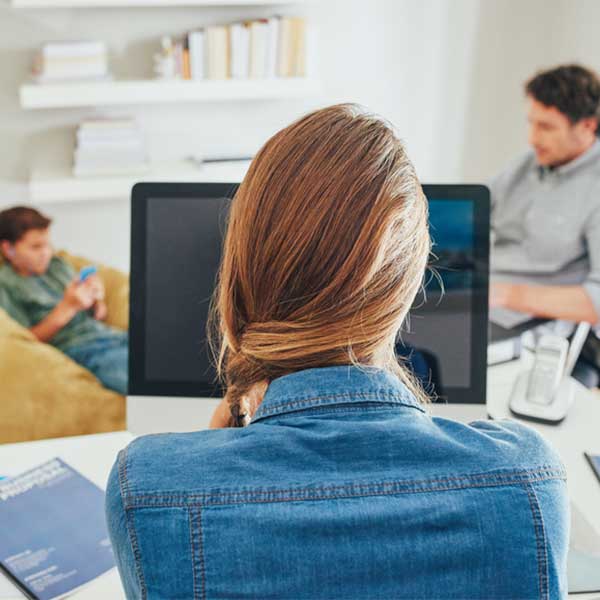
Contributed by Nathan McVeigh
Your caregiver duties never seem to end. Even when you “finish” one task, you feel like there is always something more you can do, or at least better understand. When faced with this predicament a few years ago, the only options were to work as usual then try to learn at the local library once your shift was over. Now, with pocket-sized conveniences and other contraptions, it’s not surprising that many caregivers are now taking advantage of modern technology as a way to drastically improve their caregiving knowledge and abilities.
Naturally, most of us tend to think of this technology as our laptops, smart phones, and tablets. If you’re like me, you’ve used your computer hundreds of times just to refresh yourself on the steps of C.P.R., the symptoms of certain illnesses, and more. Your use of modern technology to stay abreast of everything you’re up against certainly does everyone a favor.
Unfortunately, many caregivers stop themselves too short. The truth is, you can become a better caregiver by learning about these ever-changing technologies—and many others you may have forgotten about—more in depth.
Here are 8 ways you can leverage the power of technology to help with caregiver duties.
- Access to Education and Resources
There are so many online tools available to caregivers. The trick is to recall which resources are good for the information you are looking for specifically. For example, you should know that websites like CancerCare and the Alzheimer’s Association are meant to dispense disease-specific information geared towards the patient, family caregivers, and supporting communities. Compare that to sites like Caregiver Action Network, which offer specialized caregiver support resources like support groups online and peer network forums.
- Daily Care
From online shopping to ride sharing, you can leverage the power of technology to automate certain services. These can work for you, your family, and the people you care for. Be sure to check out sites like InstaCart for grocery delivery in under an hour, Postmates for when you need dinner on the table ASAP, and Task Rabbit for delegating those errands you simply can’t find time to complete.
- GPS Technology
Certain types of GPS devices can attach to clothing, which is especially helpful for those with dementia and Alzheimer’s. Some of these can be set up to alert other devices, like your phone or tablet. Not only do these devices locate your loved one, most of the newer models are tracking health-related data like heart rate, steps taken daily, calories burned, etc. You can monitor your loved one’s overall wellness while making sure they are safe. Here are some applications you can look at right away: QuietCare, Lively,, Philips Lifeline, and Life360.
- Personal Emergency Response Systems
One of the major caregiver duties we all share is responding to emergencies quickly. One of the best defenses against slow responses is to have an automatic notification system that calls for help when the need arises. With services like MedicAlert and LifeAlert, help is merely a button push away. (Note: Some are mobile while others only work within a certain range.)
- Medication Reminders
Medication management can be a big hassle for anybody. The confusion gets worse for caregivers who not only keep track of multiple loved ones’ as well as personal prescriptions, but who are also responsible for making sure those medicines are properly handled. The first step is managing doses and delivery. PillPack offers a full-service pharmacy that delivers prescriptions prepackaged by dose and time of day.
The next step, and sometimes the most difficult, is remembering to actually take the medications! Here is where technology can be a lifesaver. You can use services like TabSafe and MedMinder, for example, to set reminders or even send alerts when you or someone you care for has forgotten a prescription. Also, many iPad and iPhone apps, such as MedCoach, offer similar assistance.
- Wireless Home Monitoring
Home-based monitoring systems assist you by alerting you when someone has an emergency. It can alert you, for example, to someone who has fallen or if someone has gone outside without you knowing it.
- Software Applications and Health Tracking Tools
Your caregiver duties include tracking appointments, health records, insurance, daily routines, and more. You can use technological platforms like Health Vault to put all this vital information in one convenient location. Use it to your advantage by preparing for emergencies, knowing dietary restrictions, and so on.
- Support Communities
Of course you can’t forget sites like Lotsa Helping Hands, which provide a support network for caregivers and family members alike, whenever they need help. Schedule meal deliveries, visits and rides to appointments with the Care Calendar or post a Well-Wish to keep spirits high in trying times. The best part is you can use all of these apps, automated services, and new technological devices in tandem with your Lotsa Helping Hands community.
Conclusion
This list of resources is simply a place for you to start, rather than an “end all, be all solution.” We hope that by putting these new resources close at hand, using ever-changing technologies can seem less scary and more exciting. As you build your confidence by utilizing these solutions, you will be able to grow your knowledge as a proactive caregiver.

